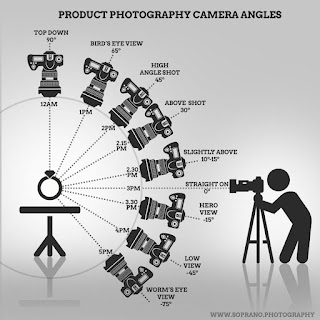http://bodminmediaas.blogspot.com/
(i was sick, notes from Maria)
L/O: to understand and practice using the principles of film making
shot type
establishing shot
- used at the beginning
- often used as transition between scenes
- Crucial introduction shot
mastershot
- confirms location
- tells us which characters are in the scene, and where
- often used for longer scenes
- often a wide shot
- often main scene
wide shot
- scale of the subjects
- lost, lonely overwhelmed
long shot/ full shot
- head to toe
- subjects physicality
medium long
- head to waist
- often used for cowboys/gun shots
- confident, dangerous
mid shot
- used the most
- above the waist, under the chest, end over the head
- digging into a subjects eyes
medium close-up shot
- head to chest
close up
- eye level
- Character thoughts and feelings
- empathy
extreme close-up shot
- specific area
- insert shot (highlights importance)
framing
single
- clean or dirty
- one character in the frame
- primary focus
- clean = no other character around
- dirty = other character is around but not fully seen
two shots
-both faces clearly visible
- visual realism
crowd shot
-
over the shoulder
- focusing at one character at time
- watcher is excluded
point of view
- often paired with pov audio
insertshot
- details
- very important
- can be combined with pov
camera angle
low angle
- below eyeline
- subject looks more powerful
High angle
- beats characters down
- often combined with low angles
- aerial shot
Overhead shot/ birds eye view
- complex movements
dutch angle
- to magnify tension
eye level shot
- eye level
- most commonly used
shoulder level shot
- often used in conversations
- high difference
- affectionate glance
Hip level
- focus on hips
knee level shot
- on knee high
Ground level shot
- on the ground
- stylish way to follow a characters movement
- show surroundings details
camera movement
static
- no camera movement
- great for dialog
pan
- Camera moves horizontally
- can be used as pov
tilt
- can reveal information
push in
- camera moves in
- not a zoom
pull out
- disconnect from the characters
- can show isolation/abandonment
zoom
- camera doesn't move
crash zoom
- fast zoom in that slows down at the end
- dramatic effect
tracking shot
- move with a subject
- "where is this character going?"
- can be used to build tension
October 5th, 2022
Basic rules:
Composition rules:
Law of thirds
- split screen (grid - 9)
- points of interest on crossing parts
Head room:
- space above the head
Looking room:
- leaving space to the direction a person is looking at
eye level:
- at the eye level of the filmed person
180 degree rule:
The 180 rule is a filmmaking technique that helps the audience keep track of where your characters are in a scene . When you have two people or two groups facing each other in the same shot, you have to establish a 180-degree angle, or a straight line, between them.
---------------------------------------------------------------------------------------
Wednesday 2nd of November
To reflect an effective scene using basic filming rules
Final product:
https://youtu.be/rFHV6Qk2oWI
Questions:
Explain the task you were given and what you needed to consider. explain your specific role and input.
The task Mrs. Mc gave us was to design our own Shootout storyboard. We needed to include a lot of different angels and techniques to learn how to film a movie. The important thing to consider were the rules we talked about in the lessons before. When it came to the filming of the storyboard we needed to follow our storyboard.
I made the storyboard, the filming and the editing. (for the first time in my life)
Explain which conventions you attempted to use and whether they were successful.
I attempted to use was a waist shot with the gun in the belt. It was successful. The other convention I used was the close up shoot. i tried to just show here face to show her emotional impression about it what she just did. The shot worked out well.
How does your media product convey a clear narrative?
The western music supports the theme of the shootout. And also the sound effects that show up when someone shots. The hip shot with a gun is the typical cowboy movie shot.
What did you do successfully and what would you need to improve/consider if redoing the task?
I need to improve with the 180 degree rule. The rest of my short film was ok. I need to improve with the costumes to make the theme more clear. The audience wasn't that sure about the Western theme. All over the production with the reason why the shootout happened was a good idea and worked out well and understandable.
www: what worked well
ebi: even better if improve







Great notes
AntwortenLöschen